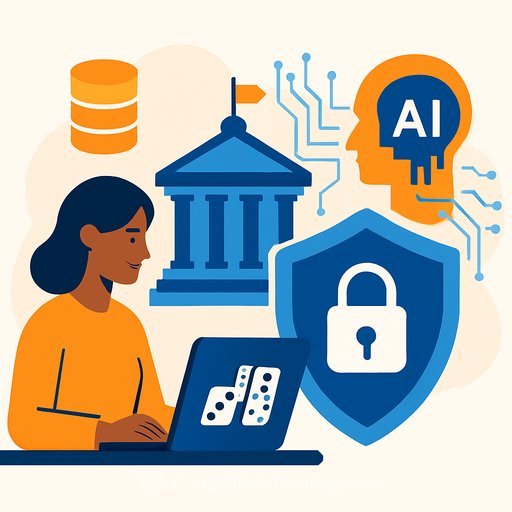How Synthetic Data Can Speed Up AI Adoption in Government
Government AI projects stall for one simple reason: the data you need is locked down, uneven or too small to train reliable models. Dave Vennergrund, VP of Artificial Intelligence at GDIT, argues synthetic data is a practical way through the gridlock - without exposing anyone's personal information.
The result: faster model development, less risk and momentum for mission work that can't wait.
The Data Bottleneck Slowing Federal AI
High-performing AI needs large, balanced datasets. Agencies rarely have that. Sensitive programs sit behind strict controls, approvals and privacy laws like HIPAA, which is essential - but it also delays or blocks access to real records.
Class imbalance makes it tougher. In fraud detection, only a tiny fraction of records (sometimes 0.01%) show the signal you're after. Large language models and other systems are data-hungry; they learn patterns only after seeing them many times.
What Synthetic Data Actually Does
Synthetic data recreates the statistical patterns and relationships of real datasets without using real people's identities. Done right, it protects privacy while keeping the features that make AI useful.
It can be simple randomization, or it can build in real-world constraints - for example, ensuring pregnancy services only appear in female records - and it can boost or suppress certain categories so your model sees enough of the rare cases you care about.
Why It Matters for Agencies Right Now
- Speed: Generate training data quickly to test concepts without waiting months for approvals.
- Privacy by design: Train on lifelike data without exposing PHI or PII.
- Coverage of edge cases: Safely simulate rare events like fraud or uncommon conditions.
- Cost control: Reduce the time and expense of collecting or annotating real data.
Asim Qureshi from AWS's AIML organization notes that model success leans more on data quality and availability than on which algorithm you pick. Synthetic data helps you improve both.
A Concrete Example
GDIT built artificial disability claim records from public information, then injected a small set of fraudulent examples. The dataset looked and behaved like the real thing, but it contained no actual claimant details. That let the team show how AI could flag irregularities without touching sensitive data.
How to Get Started (Practical Playbook)
- Define the mission decision: What will the model help you do? Fraud triage, benefits adjudication, anomaly alerts?
- Map the rare classes you need more of (e.g., fraud, edge medical cases) and plan targeted oversampling in the synthetic set.
- Pick a generation approach that respects constraints (e.g., logical rules, valid ranges, policy limits) so outputs stay realistic.
- Test privacy: run re-identification checks and ensure no record is a near-duplicate of a real person.
- Test utility: train on synthetic data and validate on a small, approved real holdout. Compare metrics before you scale.
- Document lineage and approvals so your privacy officers and IG teams can audit the process.
- Keep a hybrid mindset: use synthetic for development and augmentation, then confirm performance with governed real data before deployment.
Risks to Manage
- Bias carryover: If source data is skewed, synthetic output can repeat it. Audit distributions and outcomes.
- Overfitting to "fake" quirks: Validate on real samples to catch artifacts that won't generalize.
- Data drift: Regenerate periodically so models reflect current behavior, policy and population changes.
Policy and Governance Alignment
Agencies advancing AI can align synthetic data programs with frameworks like the NIST AI Risk Management Framework. Combine privacy impact assessments, model documentation and ongoing monitoring to keep stakeholders confident and projects moving.
Bottom Line
AI needs data. Mission data is sensitive. Synthetic data bridges that gap - letting teams build, test and iterate responsibly while protecting the public's trust.
If your team is building skills for these workflows, you can explore role-based AI learning paths here: AI courses by job.
Leaders like GDIT's Dave Vennergrund and experts at AWS are aligned on this point: better data access, done safely, moves federal AI from idea to impact. Synthetic data is one of the most direct ways to get there.
Your membership also unlocks:






